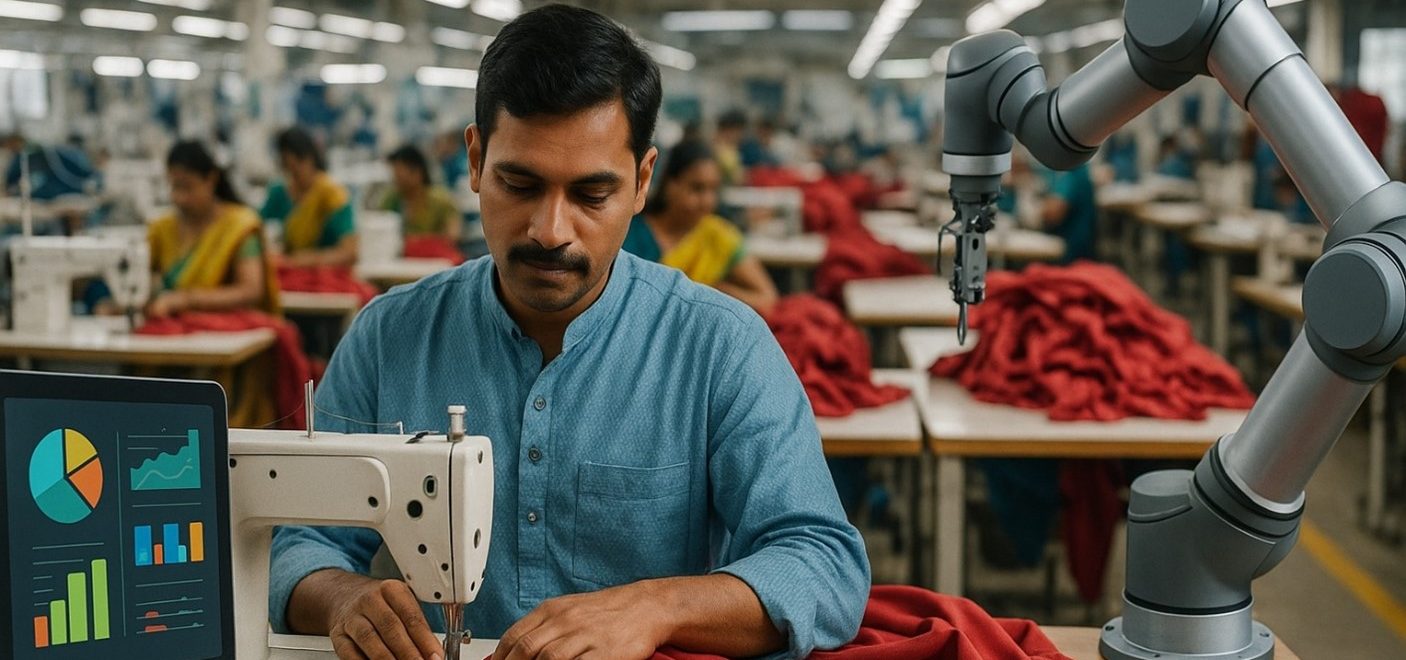India’s apparel manufacturing sector, long known for its scale and workforce, is now transforming itself through technology. In a world increasingly defined by automation, real-time data, and sustainability, Indian garment factories are shifting from traditional methods to tech-driven operations. This evolution is not just about keeping pace with global trends but about building smarter, safer, and more efficient workplaces that are equipped for the future.
Why Technology Matters More Than Ever
The global fashion industry is moving at a breakneck pace. Fast fashion, shorter lead times, tighter margins, and rising consumer expectations for quality and sustainability have made traditional production models inadequate. Indian manufacturers are now adopting modern technologies to improve productivity, reduce errors, optimize resource use, and meet global quality standards. Technology is no longer a luxury but a necessity for survival and growth.
1. Real-Time Production Tracking: Digitizing the Factory Floor
One of the first areas where technology is making a massive impact is in production tracking. Paper-based systems are being replaced by real-time tracking platforms using tablets, mobile devices, and cloud software. These systems allow supervisors and managers to:
- Monitor hourly and daily line output
- Instantly identify bottlenecks
- Compare planned vs. actual production in real-time
- Access dashboards from remote locations
For example, a T-shirt production unit in Tiruppur using a cloud-based system can now view output data from each sewing line as it happens. This level of transparency improves response time and accountability.
2. Smart Sewing Machines: Precision Meets Efficiency
Sewing machines have come a long way. Modern machines now include features like automatic thread trimming, programmable stitch patterns, and digitally controlled motors. These machines not only reduce manual errors but also improve consistency and operator comfort.
- Indian factories are investing in specialized equipment such as:
- Automated pocket setters
- Collar attachment machines
- Button and eyelet automation
This shift enhances production speed while maintaining high-quality standards, especially important for export buyers.
3. Time Study and Industrial Engineering Software
Industrial Engineers (IEs) are key to optimizing processes on the shop floor. Many Indian IEs are now replacing manual stopwatch methods with video-based time study tools and digital GSD (General Sewing Data) systems. These tools help to:
- Accurately calculate Standard Minute Values (SMVs)
- Detect non-productive motion
- Plan better line balancing
- Provide real-time feedback for efficiency improvement
This transition from analogue to digital has improved accuracy and given factories the data needed for smarter decision-making.
4. 3D Sampling and Virtual Prototyping
The traditional process of fabric sampling and physical prototype creation is time-consuming and expensive. With the rise of 3D garment design tools like CLO 3D and Browzwear, Indian factories can now:
- Create digital samples within hours
- Conduct virtual fit tests
- Share real-time edits with buyers
- Reduce material wastage and lead time
This technology is especially helpful for brands seeking quick turnaround and eco-friendly production models.
5. RFID and Barcode-Based Material Management
Material tracking is another area ripe for innovation. RFID (Radio Frequency Identification) and barcode scanning systems are now helping garment units to:
- Track fabric rolls and trims
- Monitor bundle movement between departments
- Reduce inventory mismatches
- Minimize human error in tracking
Factories in hubs like Noida and Bengaluru that have implemented RFID have reported up to 20% improvement in tracking accuracy and inventory control.
6. Energy Efficiency and Green Manufacturing
Sustainability is a growing focus in the global fashion industry, and Indian garment factories are following suit. Technologies like solar panels, LED lighting, and energy-efficient machinery are being adopted to reduce carbon footprint.
Additionally, advanced water recycling systems, effluent treatment plants (ETPs), and heat-recovery boilers are helping reduce environmental impact and comply with global sustainability standards.
7. Worker Safety and AR-Based Training
Beyond machines and materials, technology is also being used to empower workers. Factories are now adopting:
- Wearable devices that track operator posture and fatigue
- Augmented Reality (AR) and Virtual Reality (VR) modules for operator training
- Voice-guided workstations for real-time instructions
These innovations enhance worker safety, improve skill development, and reduce onboarding time for new employees.
8. Micro-Factories and On-Demand Manufacturing
Micro-factories are compact, tech-enabled manufacturing units designed for small-batch, fast-turnaround production. Using digital cutting, real-time planning, and flexible staffing, these setups are ideal for domestic and online brands.
- Such factories allow:
- On-demand manufacturing
- Just-in-time inventory management
- Customization with minimal waste
With India’s growing D2C (Direct-to-Consumer) market, micro-factories offer a promising future.
Challenges in Adopting Technology
While the benefits are clear, there are challenges:
- High initial investment, especially for MSMEs
- Resistance to change among traditional workers
- Need for tech-savvy professionals for installation and maintenance
However, with government support through initiatives like SAMARTH and PLI (Production-Linked Incentive) schemes, adoption is becoming more feasible.
India’s Competitive Edge
With its massive skilled labour force, access to raw materials, and now a growing tech infrastructure, India is well positioned to lead in tech-enabled apparel manufacturing. Exporters can gain a competitive edge by showcasing transparent, traceable, and efficient production processes to global buyers.
Conclusion: Stitching a Smarter Future
The road to a technology-driven factory may not be free of hurdles, but the journey is undoubtedly rewarding. By integrating automation, data intelligence, and sustainability, Indian garment manufacturers can redefine their global standing.
Every upgrade—whether it’s a smart sewing machine, a real-time dashboard, or a solar panel—brings the factory a step closer to a future that is not only efficient but also responsible.
Technology isn’t replacing people; it’s empowering them. It’s time for Indian factories to embrace this change and stitch a smarter, more sustainable future for the generations to come.



Leave a Comment